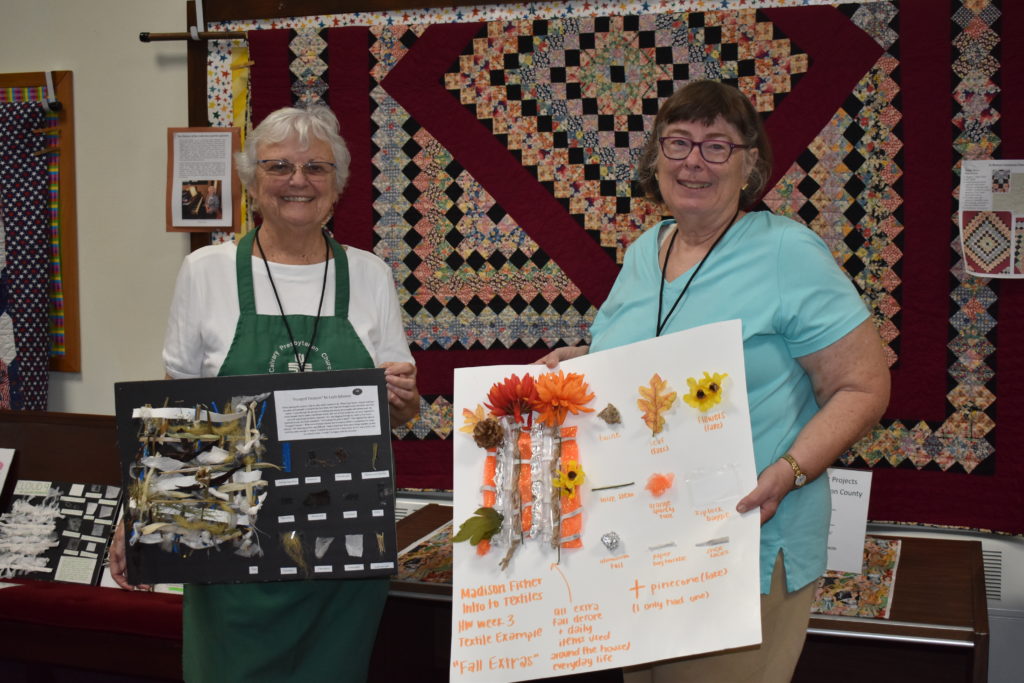

There was an awe-inspired buzz about textile history as hundreds of people explored all three floors of the Calvary Presbyterian Church during its Festival of Fibers on Oct. 1.
From an elegant Victorian dress to a practical Quaker outfit from the 1800s, to a spinning wheel making yarn, to displays of quilts and live alpacas, the event was the brainchild of Coordinator Dorothy Talavera.
“It’s the first-ever Festival of Fibers. I felt the need for a community get-together,” said an energetic Talavera, a longtime member of the Riverton church. “Church officials said we could use the space. Burlington County has a remarkable history of textiles from the Industrial Revolution and before.”
“I am enjoying this so much. This is like a museum,” visitor Jana Horton said while looking at the event’s vintage clothing display. “Everything is curated and indexed. It’s amazing.”
Horton and others enjoyed reading about how people made clothes in the 19th century, and many checked out the authentic Quaker outfit and bonnet next to a fashionable black Victorian dress – both from the 1800s.
A live display featured Jess Pierce on a small stage using a spinning wheel to make wool into yarn. Looking on was a fascinated Avery Hunter, 4, along with Lorraine Wolf and Lunden Hunter.
In the room by the stage – which then opens into the original church – Talavera pointed out displays from students in the Fashion at Rowan College Burlington County Program. Behind them were hand-made quilts. With her was volunteer Barbara Beck, who worked with Talavera and other volunteers to collect items and organize the festival.
“Church and community volunteers were a great help,” Talavera said. “Organizations like the Berry Basket Quilters of Medford wanted to be a part of it. Also, we have vendors on the bottom floor selling their goods. A family donated a quilt made by a steelworker in Pennsylvania, probably between 1900 and 1950.”
“The festival is terrific. I am very happy with the turnout,” Beck enthused. “Dorothy came up with the idea and we ran with it. We gathered all the stuff and figured out how to display it. Everyone worked well together.”
Talavera especially liked the clothing displays from the Andean region of Peru, as well as the live alpacas native to South America that delighted children. She was also thrilled by the display of hand-made doll clothes, some as old as 150 years.
Rope was also a prized commodity in the past, and one festival display featured Wall Rope Works, Inc., which had a factory in Beverly from 1902 until it closed in 1984. Burlington County has a rich history of rope-making, sail-making, spinning, knitting, clothing and button manufacturing industries that thrived well into the mid-20th century.
Even today, sail-making is alive and well, said Talavera, who wanted to thank members of the Riverfront Historical Society for their assistance in planning the festival.
“I am not sure if this will become an annual event,” she said.
However, Beck said, “You never know.”


